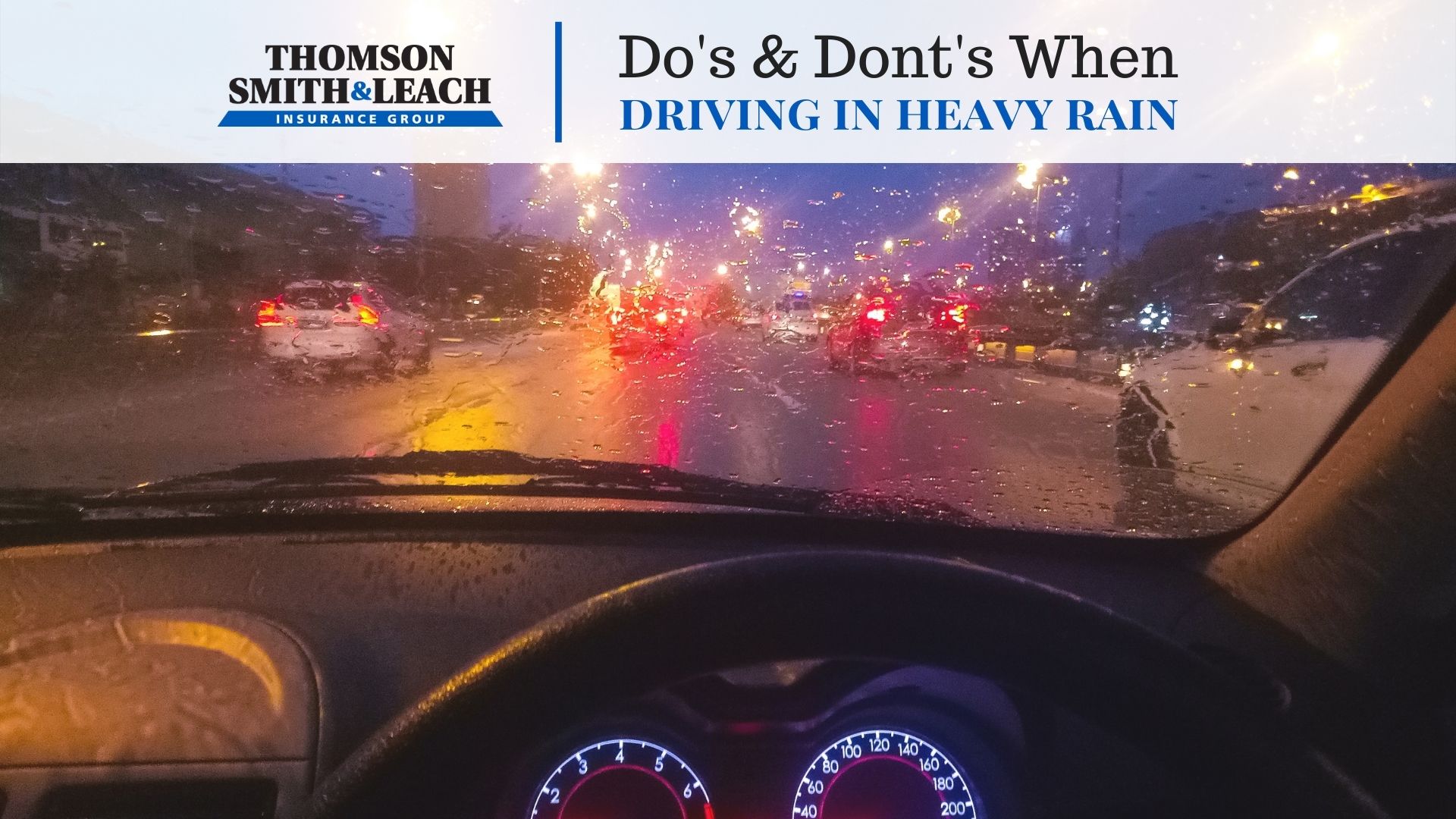All things considered, operating a motor vehicle is the most dangerous activity that people do on a daily basis. Every time you get behind the wheel, you’re taking quite a lot of risk into your hands. That risk is compounded while driving in heavy rain or other adverse weather conditions such as snow, hail, or high winds.
Road conditions are most dangerous when it rains after a dry period, as the water loosens accumulated oil and grease on the road and makes the surface of the road very slippery.
It’s important to keep in mind that you as a driver have a responsibility to be aware of best practices and make safe choices while on the road. Taking the following precautions will greatly reduce the chances of having an accident while driving in heavy rain.
Do’s When Driving in Heavy Rain
- Slow down. Plan for more than enough time to reach your destination to avoid having to rush or drive too fast for the condition of the road.
- Maintain extra distance, at least 3 car lengths, between you and the vehicle ahead of you on the road. Give yourself plenty of time and space to slow down if the vehicles ahead of you stop or slow down suddenly.
- Turn on your headlights. You’ll want to be as visible as possible while driving in heavy rain.
- Tap your brake pedal lightly to test the brakes and remove extra moisture after driving through the water.
- If hydroplaning (losing friction between the tires and the road while driving through water) occurs, take your foot off the gas pedal and steer in the direction you want to go until your vehicle stops sliding.
- Pullover and stop the car and wait until the rain slows or stops if your vision becomes obstructed or if there is standing water covering the entire road. If the water is deep enough, it can damage your vehicle’s electrical systems. In the event of severe flooding, your car can even float and be swept away.
Don’ts When Driving in Heavy Rain
- Allow condensation to accumulate and fog up your windshield; keep your line of vision clear by opening a window or using your vehicle’s ventilation system.
- Use cruise control; take your vehicle off automatic drive or cruise control at the first indication that you may be driving in heavy rain.
- Hug the shoulder; drive as close as is safely possible to the centerline. Most roads are designed to be slightly higher in the center than at the edges to allow water to roll off the road.
- Drive straight through the center of a puddle; drive around it or as close to the edges as possible. It can be difficult to tell how deep a puddle is, and whether there are any potholes or other obstacles under the water.
Naturally, the best course of action is to avoid driving in heavy rain whenever possible. Reschedule plans that can be pushed back until after the weather conditions become more favorable for driving.
Sometimes, though, operating a vehicle in adverse conditions is unavoidable. While driving in inclement weather can be a very nerve-wracking experience, having a good insurance policy in place can ease a great deal of that anxiety.
Read also: Safety Tips for Driving at Night
Contact your local car insurance agency to be sure that your vehicle is properly covered in the event of water damage or accidents caused by driving in heavy rain. Drivers in the Lafayette, Franklin, and Abbeville areas of Louisiana should contact TSL Insurance Group for all your insurance needs.
Read also: Distracted Driving Increases Auto Rates
TSL Insurance Group is more than just a car insurance agent; we offer options for a full complement of insurance products, from personal life insurance to commercial insurance. Our highly experienced and knowledgeable team is ready to offer advice and solutions to all your questions. Contact us today!


Recent Comments